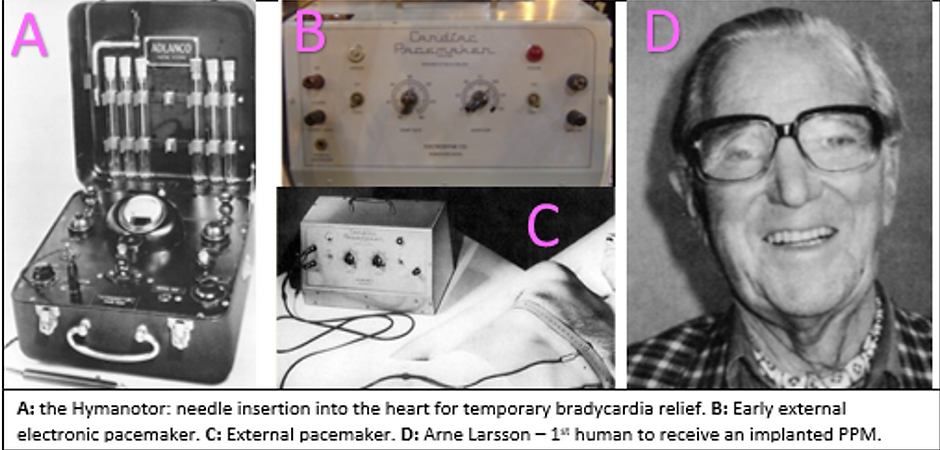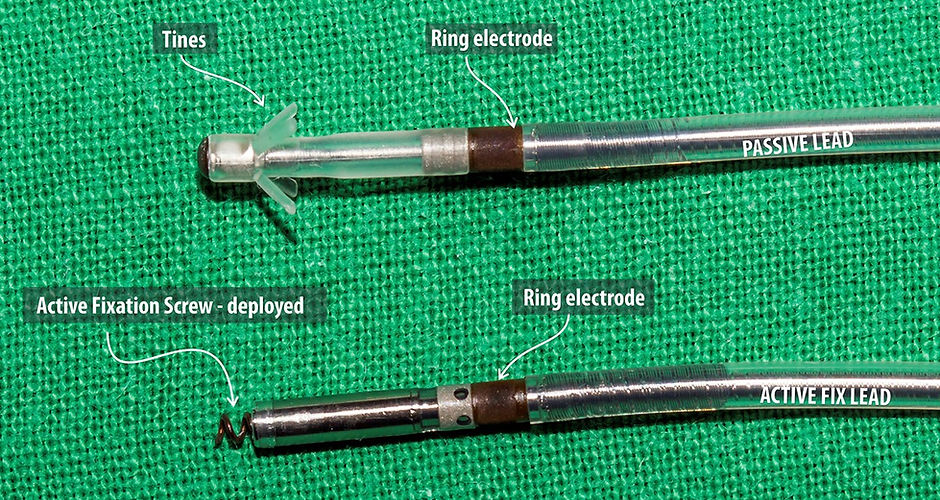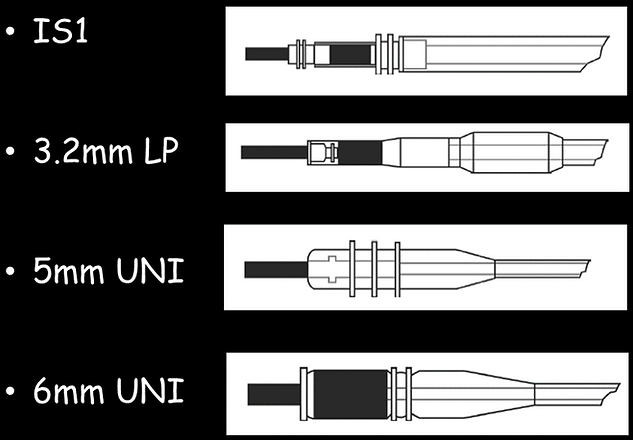
Timeline
1928 needle inserted into the heart
1940s-1950s external pacing machine used to provide continuous electrical impulses
1956 need for demand/synched PPM realises, due to accidental finding of R on T resulting in VF
1958 1st PPM implanted in a human in Sweden (bradycardia was previously treated with Atropine, Isuprel, caffeine and whisky!)
Next era followed by a series of faulty batteries, body fluid leaks and broken leads.
1959 Rechargeable batteries utilised, which were found to be unreliable
~1960 transvenous leads used instead of epicardial leads.
1969 Rate control utilised via external pacing knob
1970s lead design improvements including tined and screw-in, batteries changed from Hg to lithium, and other programmabilities were becoming available.
Late 1970s AV sequential pacing developed
1980s Steroid eluting leads created
Mid 1980s Rate responsive PPMs designed
1990s further increases in programmability

Anatomy of a pacing lead
•Connector pin: plugs into pulse generators header
•Suture sleeve: slides on the lead to suture down
•Electrode: delivers output
•Lead body: coils enclosed by insulation
(silicone vs polyurethane)
Silicone Leads
Advantages: softer, more flexible, no ESC or MIO
Disadvantages: harder to pass two leads together
Polyurethane leads
Advantages: thinner, more slippery/lubricious
Disadvantages: more likely to have insulation breaches (environmental stress cracking (ESC), metal ion oxidation (MIO), stiffer)

Lead polarity
•Electricity travels in a circuit from a positive pole (anode) to a negative pole (cathode)
•Bipolar lead has both anode and cathode on lead
•Unipolar lead has cathode on the lead tip, and anode as the generator/can

Fixation Methods


Pacing lead connections
•Historically every manufacture had it’s own unique connector
•No mixing of leads with devices
•Complicated with adaptor use
•International standard No.1 was created (IS-1)
•Utilised and recognized all over the world





